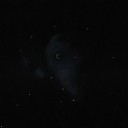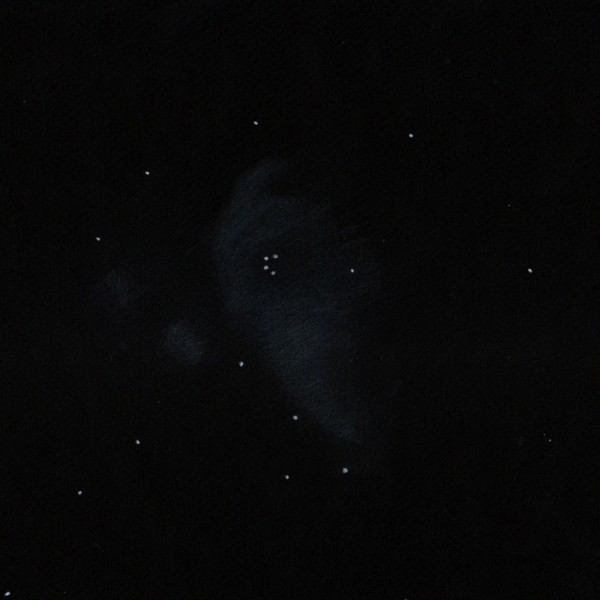Observer: Saeed Zohari
Date: Dec 29, 2010
Time: 20:40 (Tehran: +03:30 UTC)
Location: Tehran ( Lat.: 35° 43.158’N, Long.: 51° 30.616’E, Elev.: 1278m)
Optic: Telescope: Maksutov 102mm Focal Length: 1300mm
Eyepiece: 15mm 66d UltraWide
Object: Trapezium Cluster in the heart of the Orion Nebula
Object Type: Cluster and Nebula
Media: white pencil and black paper
Description:
The Trapezium, or Orion Trapezium Cluster is a tight open cluster of stars in the heart of the Orion Nebula, in the constellation of Orion. It was discovered by Galileo Galilei. On February 4, 1617 he sketched three of the stars (A, C, D), but missed the surrounding nebulosity. The fourth component (B) was identified by several observers in 1673, and several more components were discovered later, for a total of eight by 1888. Subsequently several of the stars were determined to be binaries. Telescopes of amateur astronomers from about 5 inch aperture can resolve six stars under good seeing conditions.
The Trapezium is a relatively young cluster that has formed directly out of the parent nebula. The five brightest stars are on the order of 15-30 solar masses in size. They are within a diameter of 1.5 light-years of each other and are responsible for much of the illumination of the surrounding nebula. The Trapezium may be a sub-component of the larger Orion Nebula Cluster, a grouping of about 2,000 stars within a diameter of 20 light-years.


very nice sketch Saeed.
Great job, Saeed. This is one of my favorite pieces of the nightsky.